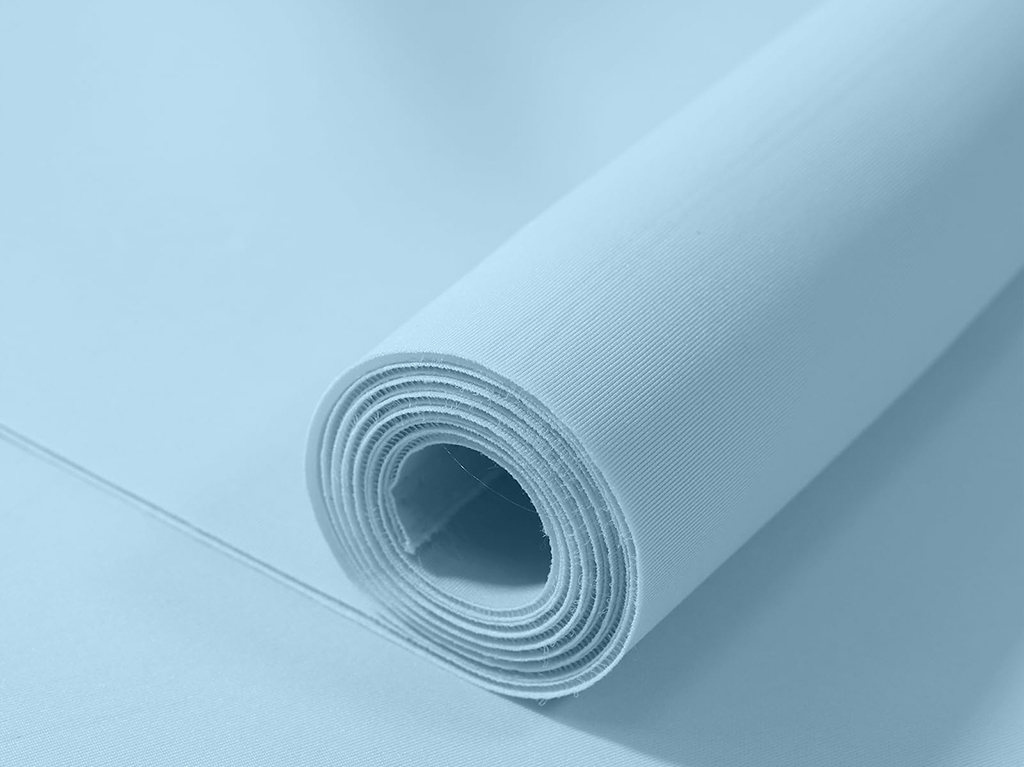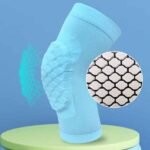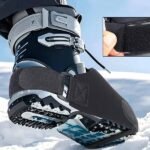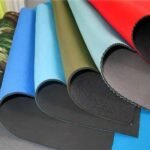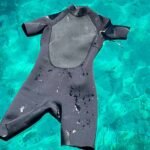Have you ever wondered if neoprene is the right insulation material for your needs? Whether you’re outfitting yourself for outdoor adventures or looking to enhance your products, understanding neoprene’s insulating properties is crucial. As someone deeply involved in the production and customization of neoprene products, I recognize the importance of choosing the right material to ensure comfort and efficiency.
Neoprene is an excellent insulator, offering superior thermal protection and versatility for a wide range of applications.
I remember preparing for a cold-weather fishing trip and debating between different insulating materials. Neoprene stood out due to its flexibility and warmth, making it the perfect choice to keep me comfortable during those chilly mornings by the lake.
What is Neoprene?
Neoprene is a type of synthetic rubber known for its excellent flexibility, durability, and resistance to various environmental factors. Developed in the 1930s, it has become a popular material in numerous industries, including fashion, automotive, and outdoor gear. Its unique properties make it an ideal choice for products requiring both insulation and resilience.
Neoprene is a versatile synthetic rubber that provides excellent flexibility and durability, making it suitable for a wide range of applications.
I first encountered neoprene during a project designing wetsuits. Its ability to maintain shape while offering significant warmth and protection impressed me, showcasing its potential beyond just sportswear.
Dive Deeper: Properties of Neoprene
Chemical Composition and Structure
Neoprene is made from polychloroprene, a polymer derived from the polymerization of chloroprene monomers. This structure grants neoprene its unique balance of flexibility and strength, allowing it to withstand stretching without tearing.
Physical Properties
| Property | Description |
|---|---|
| Flexibility | Highly flexible, allowing for easy movement and comfort. |
| Durability | Resistant to wear, tear, and environmental degradation. |
| Insulation | Excellent thermal insulation, retaining heat effectively. |
| Water Resistance | Waterproof, preventing moisture penetration. |
| Chemical Resistance | Resistant to oils, solvents, and various chemicals. |
These properties make neoprene an excellent choice for products that need to perform well under demanding conditions, such as wetsuits, gloves, and insulating materials.
How Well Does Neoprene Insulate?
Neoprene is renowned for its superior insulating capabilities. Its closed-cell structure traps air, creating an effective barrier against heat loss. This makes neoprene an ideal material for keeping warmth in and cold out, whether you’re wearing it or using it in products that require thermal protection.
Neoprene provides exceptional insulation by trapping air within its closed-cell structure, effectively preventing heat loss and maintaining temperature.
During a winter camping trip, I relied on neoprene-insulated gloves to keep my hands warm despite the freezing temperatures. The gloves maintained warmth exceptionally well, proving neoprene’s effectiveness as an insulator.
Neoprene vs. Other Insulating Materials
| Material | Insulation Quality | Flexibility | Durability | Cost |
|---|---|---|---|---|
| Neoprene | Excellent | High | Very High | Moderate |
| Foam Rubber | Good | Moderate | High | Low to Moderate |
| Down | Superior | Low | Moderate | High |
| Fleece | Good | High | Moderate | Low to Moderate |
Neoprene stands out for its balance of excellent insulation, high flexibility, and very high durability. While down offers superior insulation, it lacks the water resistance and durability of neoprene. Fleece provides good insulation and flexibility but is not as durable or water-resistant.
Thermal Efficiency
Neoprene’s thermal efficiency is measured by its ability to retain heat. The material’s closed-cell structure not only insulates but also provides buoyancy, which is particularly beneficial in aquatic environments where maintaining body temperature is crucial.
By comparing these materials, it’s clear that neoprene offers a unique combination of properties that make it suitable for a variety of insulating applications.
How Does Neoprene Work as an Insulator?
Neoprene’s insulating ability stems from its closed-cell foam structure, which traps air pockets within the material. These air pockets serve as a barrier to heat transfer, effectively reducing the loss of body heat in cold environments. Additionally, neoprene’s flexibility allows it to conform closely to the body, minimizing gaps where heat could escape.
Neoprene insulates by trapping air within its closed-cell structure, creating a barrier that reduces heat transfer and maintains warmth.
I once used neoprene-lined boots during a cold expedition. The snug fit and air-trapping properties kept my feet warm even in sub-zero temperatures, demonstrating how neoprene effectively blocks heat loss.
Air Pocket Formation
The closed-cell foam of neoprene contains millions of tiny air pockets. These pockets act as mini-insulators, each trapping air that has minimal movement. Since air is a poor conductor of heat, these trapped pockets significantly reduce heat transfer from the body to the external environment.
Material Density and Thickness
The density and thickness of neoprene also play crucial roles in its insulating properties. Thicker neoprene provides more air pockets, enhancing insulation. Higher density neoprene offers better resistance to compression, maintaining the integrity of the air pockets over time.
| Factor | Impact on Insulation |
|---|---|
| Thickness | Thicker neoprene traps more air, increasing insulation. |
| Density | Higher density maintains air pockets better under stress. |
| Surface Texture | Smooth surfaces minimize air leakage, enhancing insulation. |
Heat Retention vs. Heat Loss
Neoprene not only retains body heat but also protects against external cold sources. This dual-action makes it ideal for environments where both heat retention and protection from cold are necessary.
Understanding these mechanisms helps in optimizing neoprene’s insulating capabilities for various applications, ensuring maximum efficiency and comfort.
Does Neoprene Protect from Cold?
Absolutely, neoprene is highly effective at protecting against cold. Its insulating properties keep body heat from escaping, while its water-resistant nature prevents moisture from reaching the skin. This combination ensures that users remain warm and dry, even in the coldest and wettest conditions.
Neoprene provides excellent protection from cold by retaining body heat and preventing moisture penetration, ensuring warmth and dryness.
During a winter fishing trip, I wore neoprene waders that kept me warm despite the icy water temperatures. The combination of insulation and waterproofing made neoprene an indispensable material for staying comfortable in cold, wet environments.
Moisture Barrier
Neoprene’s waterproof properties create an effective barrier against moisture. By preventing water from penetrating the material, neoprene ensures that the insulating air pockets remain dry, maintaining their heat-trapping efficiency.
Thermal Retention
Neoprene’s ability to retain heat is enhanced by its close fit to the body. This snugness minimizes air gaps, reducing heat loss and ensuring that the body stays warm even in extremely cold conditions.
| Feature | Benefit |
|---|---|
| Waterproofing | Keeps moisture out, maintaining insulation effectiveness. |
| Close Fit | Reduces air gaps, enhancing thermal retention. |
| Elasticity | Allows for movement without compromising the insulation barrier. |
Temperature Regulation
Neoprene also helps regulate body temperature by providing consistent insulation. This is particularly useful in environments where temperatures fluctuate, as neoprene can adapt to maintain a stable internal temperature.
By combining these features, neoprene offers comprehensive protection against cold, making it an ideal choice for a variety of cold-weather applications.
What is the R Value of Neoprene Insulation?
The R-value is a measure of thermal resistance, indicating how well a material insulates against heat flow. Neoprene insulation typically has an R-value ranging from 3.5 to 4.5 per inch of thickness. This makes neoprene a highly effective insulator, suitable for applications requiring significant thermal protection.
Neoprene insulation boasts an R-value of approximately 3.5 to 4.5 per inch, making it a strong performer in thermal resistance and heat retention.
In my experience, using thicker neoprene in waders provided a higher R-value, resulting in better warmth retention during prolonged exposure to cold water. This demonstrated how the R-value directly impacts the insulating performance of neoprene products.
R-Value Explained
R-value measures a material’s ability to resist heat flow. The higher the R-value, the better the material insulates. It is calculated based on the material’s thermal conductivity, thickness, and density.
| R-Value Range | Description |
|---|---|
| 2 – 3 | Basic insulation for mild conditions. |
| 3.5 – 4.5 | Excellent insulation for cold environments. |
| 5+ | Superior insulation for extreme cold conditions. |
Neoprene vs. Other Insulating Materials
| Material | R-Value per Inch | Description |
|---|---|---|
| Neoprene | 3.5 – 4.5 | High thermal resistance and flexibility. |
| Foam Rubber | 3 – 4 | Good insulation with moderate flexibility. |
| Polyurethane Foam | 6 – 7 | Superior insulation, often used in high-performance applications. |
| Fiberglass | 2.9 – 3.8 | Commonly used in building insulation, less flexible. |
While neoprene may not have as high an R-value as polyurethane foam, its combination of flexibility, durability, and adequate thermal resistance makes it a preferred choice for many applications where movement and comfort are essential.
Practical Implications
A higher R-value means better insulation, which translates to increased warmth and energy efficiency. For products like wetsuits, gloves, and other outdoor gear, a higher R-value ensures that users remain warm without sacrificing mobility.
By understanding the R-value, you can better assess the suitability of neoprene insulation for your specific needs, ensuring optimal performance and comfort.
What Products Benefit Most from Neoprene’s Insulation?
Neoprene’s excellent insulating properties make it ideal for a variety of products that require warmth, protection, and flexibility. Key products that benefit from neoprene’s insulation include wetsuits, gloves, boots, wetsuit accessories like hoods and sleeves, and insulating bags. These products leverage neoprene’s ability to retain heat and protect against moisture, ensuring comfort and performance in demanding environments.
Neoprene’s insulation is best utilized in products that require a combination of warmth, flexibility, and moisture protection, such as wetsuits, gloves, and boots.
I’ve seen neoprene’s impact firsthand when switching from traditional materials to neoprene in my outdoor gear. The enhanced warmth and flexibility significantly improved my comfort and performance during extended use in cold conditions.
Wetsuits and Dive Gear
- Wetsuits: Neoprene wetsuits provide thermal insulation, allowing divers and surfers to stay warm in cold water while maintaining flexibility for ease of movement.
- Dive Boots and Gloves: Neoprene accessories offer additional insulation and protection, ensuring that extremities remain warm and dry during prolonged water activities.
Protective Gloves
- Fishing Gloves: Neoprene fishing gloves protect hands from cold water and provide a secure grip on slippery equipment.
- Work Gloves: In industries like construction and automotive repair, neoprene gloves offer thermal protection and resistance to oils and chemicals.
Insulated Footwear
- Neoprene Boots: Ideal for cold-weather activities, neoprene boots keep feet warm and dry while providing flexibility and comfort.
- Snow Boots: Neoprene lining in snow boots enhances thermal insulation, making them suitable for harsh winter conditions.
Insulated Bags and Containers
- Coolers and Insulated Bags: Neoprene’s thermal properties make it an excellent material for keeping food and beverages cold during outdoor activities.
- Tool Bags: Insulated tool bags made from neoprene help maintain the temperature of tools and equipment, preventing them from getting too cold in winter.
Sports and Recreation Gear
- Yoga Gloves and Accessories: Neoprene yoga gloves provide warmth and improve grip during cold-weather practices.
- Paddleboarding Accessories: Neoprene attachments offer insulation and protection, enhancing the comfort and performance of paddleboarders.
Medical and Healthcare Products
- Insulated Medical Gloves: Neoprene medical gloves provide both protection and comfort, suitable for extended use in clinical settings.
- Therapeutic Supports: Neoprene is used in braces and supports to provide warmth and stability, aiding in injury recovery and prevention.
By integrating neoprene’s insulating properties, these products achieve higher levels of performance, comfort, and durability, making them indispensable in their respective fields.
Are There Limitations to Neoprene’s Insulation?
While neoprene is an exceptional insulator, it does have some limitations. Its thermal resistance, although high, may not be sufficient for extreme cold environments compared to specialized materials like polyurethane foam. Additionally, neoprene can degrade over time with prolonged exposure to sunlight and certain chemicals, which can reduce its insulating properties. Understanding these limitations is essential for making informed decisions about when and where to use neoprene insulation.
Despite its excellent insulating properties, neoprene has limitations in extreme cold conditions and can degrade with prolonged exposure to UV light and certain chemicals.
I once used neoprene gloves in a high-sun environment and noticed gradual wear and loss of flexibility over time. This experience underscored the importance of proper maintenance and consideration of environmental factors when using neoprene-insulated products.
Thermal Limitations
Neoprene provides excellent insulation for most applications, but in environments with extremely low temperatures, its R-value may not be sufficient on its own. In such cases, layering neoprene with other insulating materials or using specialized thermal gear may be necessary to achieve the desired level of warmth.
Durability Concerns
- UV Degradation: Prolonged exposure to ultraviolet (UV) light can cause neoprene to break down, leading to loss of elasticity and insulating properties. Using neoprene products in shaded areas or applying UV-resistant coatings can mitigate this issue.
- Chemical Exposure: Certain chemicals can degrade neoprene, reducing its effectiveness as an insulator. It’s important to avoid contact with harmful substances and to clean neoprene products promptly after exposure to chemicals.
Maintenance and Care
Proper maintenance is crucial to extending the lifespan of neoprene-insulated products. Regular cleaning, drying, and storage away from direct sunlight can prevent premature degradation and maintain insulating performance.
| Limitation | Description | Mitigation Strategies |
|---|---|---|
| Extreme Cold | Insulation may not suffice for extreme temperatures | Layer with additional insulating materials |
| UV Degradation | Prolonged sunlight exposure weakens neoprene | Use UV-resistant coatings and store in shaded areas |
| Chemical Sensitivity | Certain chemicals can damage neoprene | Avoid exposure to harmful chemicals and clean promptly |
| Weight and Bulk | Thicker neoprene can add weight and bulk to products | Balance insulation needs with mobility requirements |
Understanding these limitations allows users to make informed decisions and take appropriate measures to maximize the benefits of neoprene insulation while minimizing potential drawbacks.
How to Choose the Right Neoprene Product for Your Insulation Needs?
Selecting the appropriate neoprene product for your insulation requirements involves considering factors such as thickness, density, intended use, and environmental conditions. Assessing these aspects ensures that you choose a neoprene product that provides optimal thermal protection, comfort, and durability for your specific needs.
Choosing the right neoprene product requires evaluating thickness, density, intended use, and environmental conditions to ensure it meets your insulation and performance requirements.
I once needed to select neoprene gear for a multi-day winter expedition. By carefully evaluating the thickness and density of various neoprene products, I was able to choose gear that provided the necessary warmth and flexibility, ensuring comfort and performance throughout the trip.
Thickness and Density
- Thickness: Thicker neoprene provides greater insulation but can be less flexible and more bulky. The appropriate thickness depends on the level of insulation required and the intended activity.
- Density: Higher density neoprene offers better durability and insulation but may be heavier. Lower density neoprene is more flexible and lighter, suitable for activities requiring greater mobility.
| Factor | Considerations | Recommendations |
|---|---|---|
| Thickness | Balance between insulation and flexibility | Choose thicker neoprene for colder environments; thinner for warmer conditions |
| Density | Higher for durability and insulation, lower for flexibility | High-density for industrial use; low-density for sports and outdoor activities |
Intended Use
Different applications require different neoprene properties. For example, wetsuits need flexibility and thermal insulation, while tool bags require durability and moisture resistance. Identifying the primary use helps in selecting the right neoprene product.
Environmental Conditions
Consider the conditions in which the neoprene product will be used. Exposure to extreme temperatures, UV light, or chemicals may influence the choice of neoprene thickness and density, as well as the need for additional protective coatings.
Fit and Comfort
A well-fitted neoprene product ensures maximum insulation and comfort. For wearable items like gloves and wetsuits, proper sizing is crucial to avoid gaps that could compromise insulation and protection.
Customization Needs
If branding or personalization is important, consider neoprene products that offer customization options. Customized neoprene products can enhance brand visibility and provide a unique identity for businesses and organizations.
Selecting the Right Product
- Assess Insulation Needs: Determine the level of insulation required based on the activity and environmental conditions.
- Choose Appropriate Thickness and Density: Select neoprene with the right thickness and density to balance insulation, flexibility, and durability.
- Consider the Intended Use: Match the neoprene product’s properties with the specific application to ensure optimal performance.
- Evaluate Environmental Factors: Account for exposure to elements like UV light and chemicals, selecting additional protective measures if necessary.
- Ensure Proper Fit: For wearable products, prioritize correct sizing to maximize insulation and comfort.
- Explore Customization Options: If needed, choose neoprene products that can be customized to meet branding or specific design requirements.
By systematically evaluating these factors, you can select the neoprene product that best meets your insulation needs, ensuring both functionality and comfort in your chosen applications.
Conclusion
In conclusion, neoprene stands out as an excellent insulator, offering a unique combination of thermal protection, flexibility, and durability that makes it suitable for a wide range of applications. Its ability to trap air within its closed-cell structure ensures effective heat retention, while its resilience against environmental factors extends the lifespan of products made from neoprene. However, it’s essential to consider neoprene’s limitations, such as its performance in extreme cold and susceptibility to UV degradation, to maximize its benefits.
At Szoneier, we specialize in manufacturing high-quality neoprene products designed to meet diverse insulation needs. With our 20 advanced production lines, we ensure that each product meets stringent quality standards while offering customizable options to suit your specific requirements. Our neoprene products are durable, finely textured, soft, highly elastic, shock-resistant, thermally insulating, waterproof, and available in various designs, colors, sizes, and packaging options. We cater to B2B, wholesale, OEM, and ODM models, primarily exporting to Europe, North America, and Australia.
Whether you are a brand owner, wholesaler, importer, or design firm, Szoneier is equipped to provide you with reliable and high-quality neoprene products that enhance insulation, comfort, and brand visibility. Our low minimum order quantities and flexible customization options make it easy for you to get started. Additionally, we offer free samples and color cards to help you make informed decisions.

